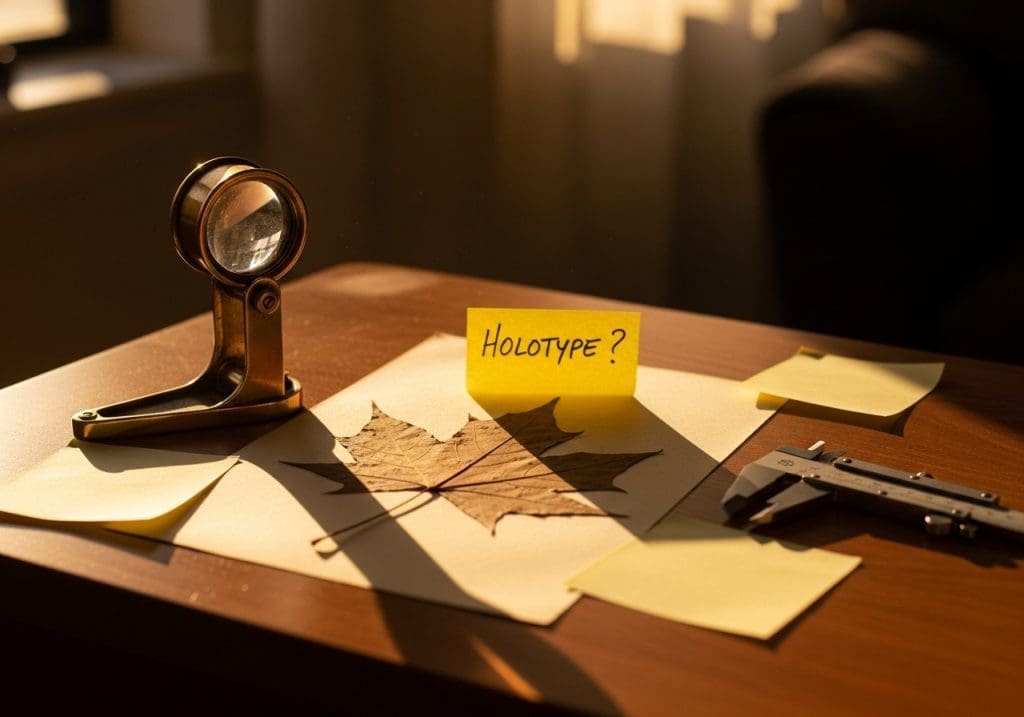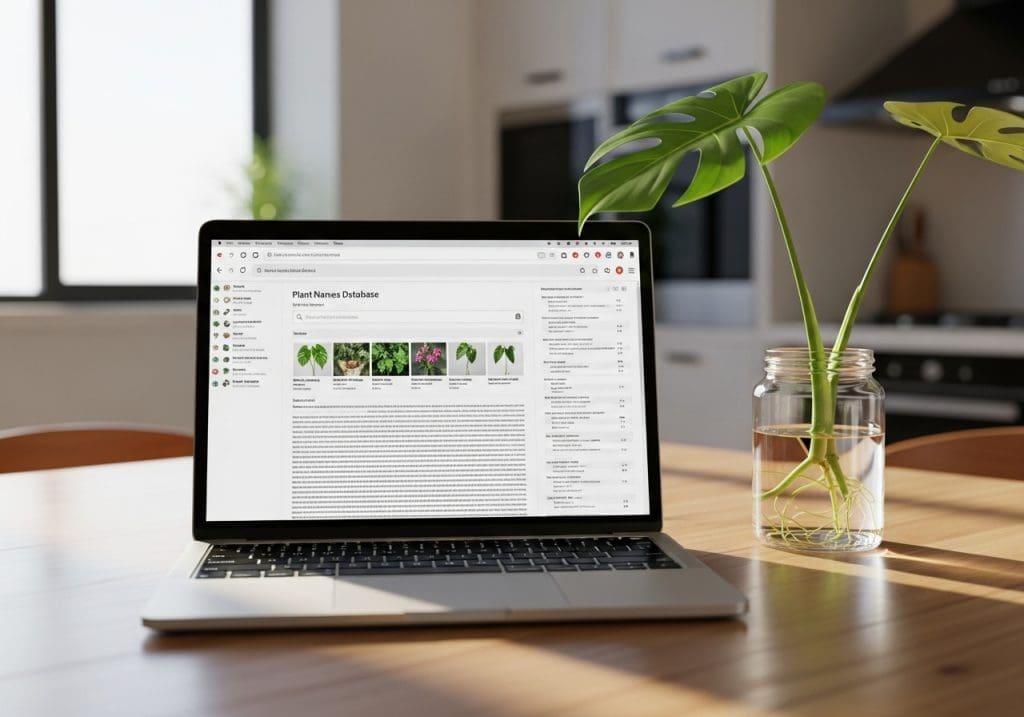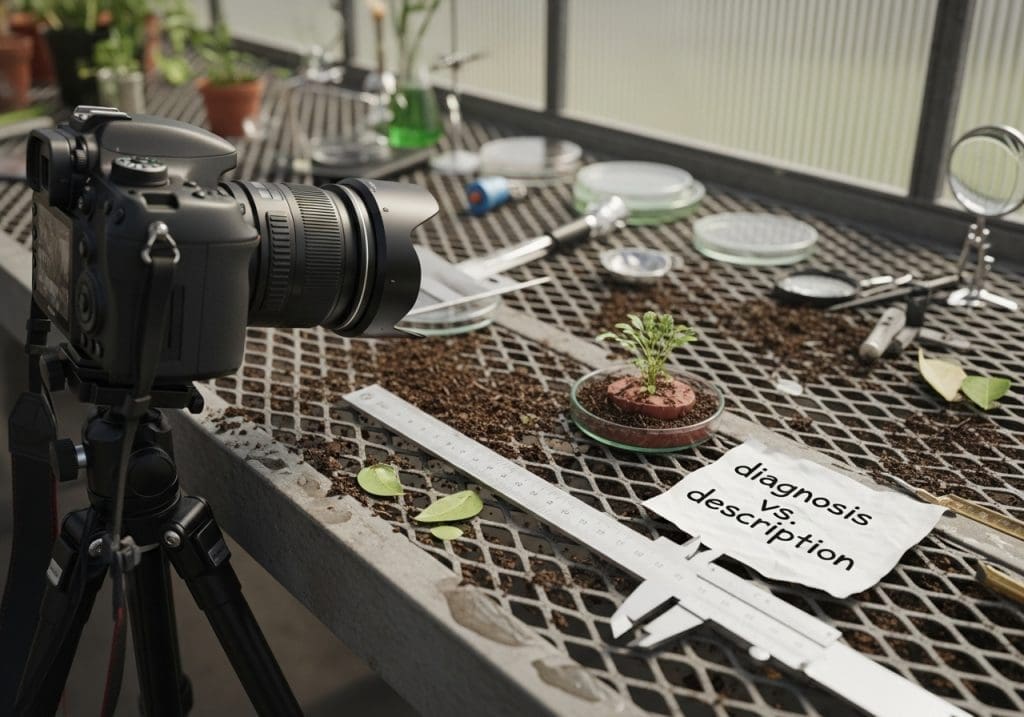If you’ve ever seen a plant go viral and wondered, “Is that really new—or just a renamed look-alike?”, you’re in the right place. Botanists follow a clear, checkable path to confirm a “new species,” and gardeners can understand the essentials. Think evidence, comparison, and publication—not hype.
“Sometimes I’ll set a cutting on my kitchen table and try to ‘read’ it like a story—leaf by leaf, node by node.” That curious habit is basically where taxonomy begins.

What counts as a “new species”?
In botany, “new” doesn’t mean newly evolved—it means newly recognized and described. Botanists must show that a population differs consistently from all named relatives (morphology, ecology, geography, and often DNA), then publish a formal description that follows the International Code of Nomenclature for algae, fungi, and plants (ICN).
Expert quote: Missouri Botanical Garden explains, “Each new plant species must be described and published in a recognized scientific journal or book.”
A few terms in plain English
- Holotype: the single, designated reference specimen for the new species (stored in an herbarium). Isotypes are its duplicates; paratypes are additional cited specimens.
- Diagnosis: a short statement of how it differs from similar species; description: fuller details (measurements, shapes, colors).
- Protologue: everything published with the name at first (description/diagnosis, type citation, figures, etc.).
- Typification: choosing/clarifying the type specimen if something was ambiguous later.
Botanists don’t just ‘announce’ a species—they follow a careful sequence of steps.
| Step | What Happens | Why It Matters |
|---|---|---|
| 1. Discovery | Plant observed and documented in the wild | Establishes evidence of occurrence |
| 2. Specimen Collection | Holotype collected, pressed, labeled | Serves as permanent reference |
| 3. Comparison | Checked against herbarium & literature | Ensures it’s not already described |
| 4. Diagnosis | Unique traits written down | Proves distinctness |
| 5. Publication | Peer-reviewed journal article | Official recognition |
| 6. Naming | Latin binomial assigned | Adds species to taxonomy |
| 7. Registration | Indexed in IPNI & databases | Makes info accessible globally |
The step-by-step path botanists follow
1) Field discovery (with permits)
A plant is first observed and documented in the wild. Botanists record the location, habitat, and visible traits. These first notes establish the baseline evidence that a new species may exist.
2) Collect, press, label
A holotype—the single pressed and labeled specimen—is collected and stored in a herbarium. As Missouri Botanical Garden explains, this permanent record anchors the species name and ensures future consistency.

3) Compare against the literature and collections
The specimen is compared with herbarium records and botanical literature. This process checks if the plant has already been described under another name, avoiding duplication.
👉 Explore names on IPNI (helpful for gardeners checking claims).
(Clicking IPNI gives you a feel for how official plant names are tracked and where they were published.)
4) Measure, diagnose, and (often) sequence DNA
Botanists prepare a diagnosis—a short description of traits that separate the species from its closest relatives. This written evidence is essential for proving distinctness.
5) Choose the name and write the protologue
The findings are published in a peer-reviewed scientific journal. Formal publication makes the name official and allows other scientists to review and confirm the work.
6) Designate the type (holotype) and cite isotypes
A Latin binomial is assigned following the International Code of Nomenclature. The name reflects distinct traits or honors a person, and it officially enters the taxonomy system.
7) Publish validly under the ICN
Finally, the new species name is indexed in global databases such as the International Plant Names Index. This step ensures the information is accessible worldwide and prevents confusion in future studies.
“Since the 1st January 2012, botanists have been able to publish new names in electronic journals and may use Latin or English as the language of description or diagnosis.” — Nicolson et al., BMC Evolutionary Biology (2017).
Many journals also encourage registering details in databases that track names and types, improving transparency for future researchers. For everyday growers, that means less confusion and clearer references to check.

How gardeners can spot reliable “new species” claims
Look for three signals in the announcement
- A type specimen named and housed in a known herbarium (e.g., K, MO, NY).
- A published diagnosis/description with measurements and comparisons.
- A citation of where it was published (journal/book) that you can look up.
If an Instagram caption says “brand-new species!” but provides no reference to a publication or type, be skeptical. Ask: Where’s the holotype? Where was it published?
Use authoritative name resources
Kew’s approachable guide to plant names and synonyms is a great doorway for non-specialists, showing how names are tracked and stabilized across big databases. (It’s surprisingly readable and helpful when two names seem to fight for the same plant.)
👉 Read Kew’s intro to plant names and synonyms (excellent for gardeners).
And if you want to check whether a name exists—and where it was published—scan IPNI by author, genus, or year, then chase the original paper from there. (It’s the same quick check many botanists do.)
Why the process matters beyond the lab
A confirmed name isn’t just academic; it affects conservation, trade, and even care. When a species is correctly delimited and described, its habitat and risks can be assessed; nurseries label stock accurately; and growers can look up reliable care info without mixing species.
If you’re dialing in conditions after an ID change, this hands-on guide to bright, indirect light can help you translate the name to day-to-day care at home.
“Once I learned to read formal descriptions, the measurements stopped feeling intimidating and started feeling like a recipe. Suddenly the plant’s look made sense.”

A gardener’s mini-glossary (bookmark-worthy)
- Holotype / Isotype / Paratype: the anchor specimen / its duplicates / additional cited specimens.
- Synonym: a different scientific name that refers to the same species (older or incorrect usage).
- Nomenclature vs. taxonomy: naming rules (ICN) vs. the scientific process of classifying species.
- Lectotype / Neotype: a type chosen later if the original is missing/ambiguous (typification to stabilize names).
- Valid publication: meeting the ICN rules (type designated, diagnosis/description, effective publication). From 2012 onward: English or Latin allowed; e-publication accepted.
From discovery to your windowsill: putting it together
- New to science doesn’t automatically mean hard to grow, but name clarity helps you find the right care. If seedlings come home with gnats (it happens), this practical plan for fungus gnat control keeps observations and photos clean for your records (internal).
- When a species gets described, authors often include habitat details (shade level, substrate, moisture). Translate those into your setup at home—light meters and notes are your best friends. If you’re refining conditions, a numbers-first approach to lux and foot-candles is worth a skim (internal: Bright Indirect Light…).
Friendly FAQs real plant lovers ask
Is DNA required to confirm a new species?
Not strictly—morphology + literature comparison can suffice—but DNA evidence is increasingly common and powerful for showing relationships, especially in groups with many look-alikes.
Do names ever change after publication?
Yes. As more data arrive, a name may be synonymized under an older one or split into multiple species. That’s normal science—databases like IPNI and Kew’s resources help you track the current usage.
Can photos alone be used as a type?
For most plants, a physical specimen is the standard (holotype). There are rare, specific provisions, but the rule of thumb is: real, preserved material in an herbarium.
What changed in 2012 that I should know about?
Two things gardeners sometimes hear: English-language diagnoses/descriptions are allowed and electronic (online) publication is acceptable—both sped up and widened access to plant naming.

RarePlantCare Editorial Team produces expert content on rare plants.
Our articles are AI-assisted and human-edited before publication.
We aim to provide practical, evidence-based guides for plant lovers worldwide.
Learn more about our Editorial Policy



I am glad to be a visitor of this everlasting blog! , appreciate it for this rare information! .
I found your weblog site on google and examine a couple of of your early posts. Continue to maintain up the excellent operate. I just further up your RSS feed to my MSN News Reader. In search of forward to reading extra from you afterward!…